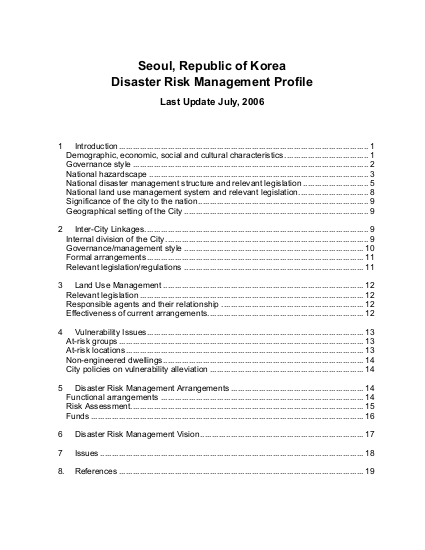
The Republic of Korea, otherwise known as South Korea, is located on a mountainous peninsula extending from mainland China. The population of South Korea, as of July 2006, is 48,846,823. A census conducted in 2000 revealed that 88.3 % of the national population of South Korea resides in cities. In comparison, in 1960 38 % of the population lived in South Korea’s cities, which shows the population shift. This growth is from industrialization resulting in urbanization. Due to this rapid growth and to help lighten the housing issues for Seoul, in 1989 the government built five satellite cities: Ilsan, Bundang, Sanbon, Pyeongchon, and Jungdong. Modern day Seoul acts as a metropolitan center for more than 20 million people.
Resource collections
- UN Habitat - Urban Response Collection
- Urban Response - Urban Crisis Preparedness and Risk Reduction
- Urban Response Collection - Community Engagement and Social Cohesion
- Urban Response Collection - Economic Recovery
- Urban Response Collection - Environment and Climate Change
- Urban Response Collection - Housing, Land and Property
- Urban Response Collection - Urban Crisis Response, Recovery and Reconstruction
- Urban Response Collection - Urban Resilience